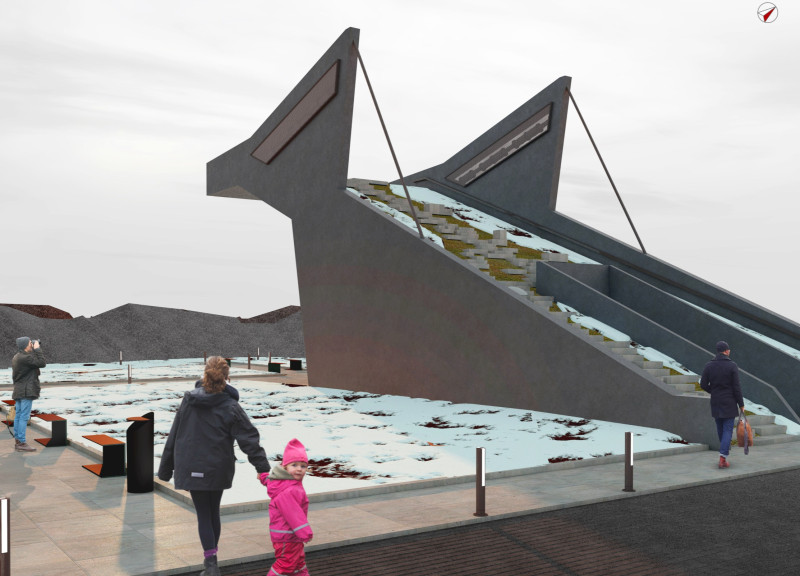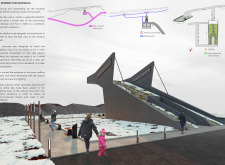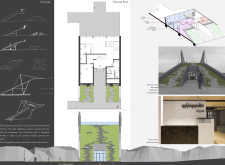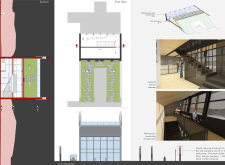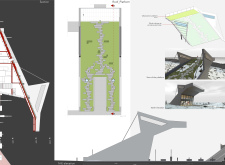5 key facts about this project
A Stairway for Grjótargjá combines functionality and design in a way that enhances the surrounding landscape. Located near a tectonic fault, the project features a suspended platform that provides expansive views of the area. The overall design focuses on creating a space that invites visitors to connect with nature while enjoying a unique perspective of their surroundings.
Design Concept and Visitor Engagement
The design focuses on making the stairway an experience in itself, inviting visitors to interact with the space. Seating areas are integrated into the ascent, allowing people to stop and enjoy the views or take a break. This engagement with the architecture is a key part of the experience, making the journey to the platform more than just a way to get from one place to another.
Pathway Integration
Walking paths link the entrances to the caves, designed with street furniture and lighting for accessibility. These paths are laid out to guide visitors smoothly through the site. Ease of movement is prioritized, making sure that wandering through the area feels natural and welcoming.
Material Considerations
The structure uses steel beams and columns, providing the necessary support for the elevated design. Slate cladding is chosen to match the landscape, ensuring the building feels like a part of its surroundings. A glass wall on the northeast side enhances visibility toward the caves, establishing a connection between the interior and the outdoor space.
Sustainable Features
Sustainability plays an important role in the project. Wind turbines are placed within the lighting poles to harness renewable energy, contributing to the site's self-sufficiency and lowering its environmental impact. This approach reflects a growing awareness in architecture about the need to balance design with ecological responsibilities.
The design culminates in a roof garden that doubles as a staircase leading to the platform. This feature not only adds greenery to the space but also reinforces the idea of ascent and exploration throughout the entire project.


